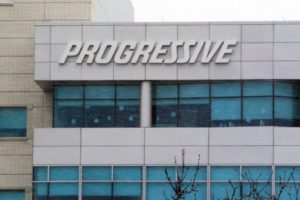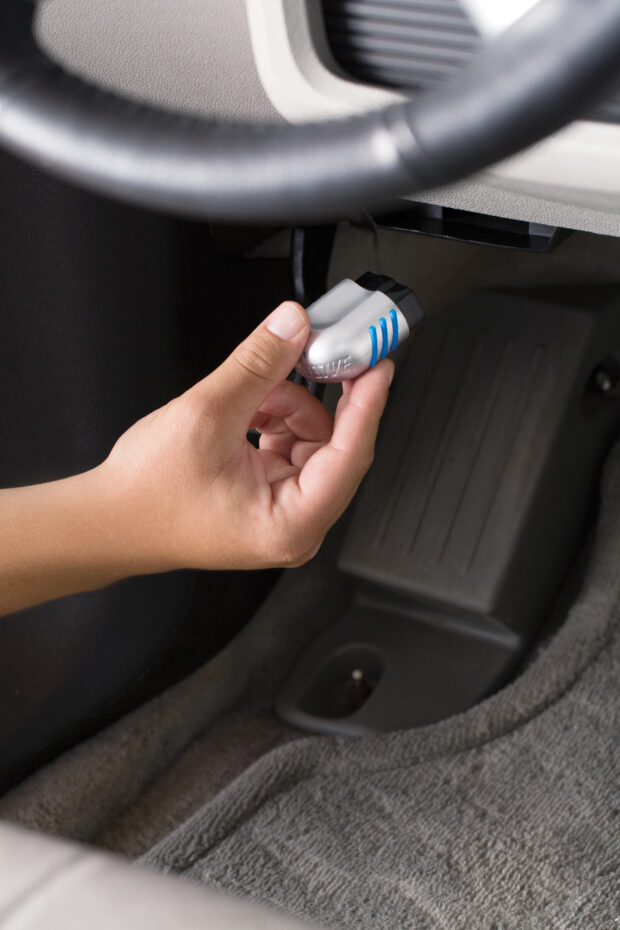While Progressive gave back more than $1 billion of premiums last year, and lowered rates in recognition pandemic-related reductions in driving activity, the insurer is offering more potential discounts through changes in its Snapshot program in 2021.
Chief Executive Officer Tricia Griffith revealed the latest tinkering with the Snapshot personal auto usage-based insurance program Tuesday during an investor relations conference call. After brief opening remarks about the year just ended, which saw Progressive’s net premiums grow by $3 billion, policies in force increase by 2.4 million policies and underwriting profits for personal lines jump 13.2 percent, Griffith noted that Progressive’s underwriting results continued to benefit from reduced claims frequency, partially offset by an increase in severity.
 “In addition to the over $1 billion given to customers in the form of credits early on in the pandemic, we also filed personal auto rate changes that averaged a decrease of approximately 3 percent between April and December in over 40 states,” she said, reviewing last year’s activities—the “Apron Relief Program” announced in April 2020 to give 20 percent premium credits to personal auto customers, and the rate changes that provided customers with aggregate annualized savings estimated at about $800 million. (Article continues below)
“In addition to the over $1 billion given to customers in the form of credits early on in the pandemic, we also filed personal auto rate changes that averaged a decrease of approximately 3 percent between April and December in over 40 states,” she said, reviewing last year’s activities—the “Apron Relief Program” announced in April 2020 to give 20 percent premium credits to personal auto customers, and the rate changes that provided customers with aggregate annualized savings estimated at about $800 million. (Article continues below)
“We continue to invest in our personal auto product,” she said, going on described the “temporary change” to Snapshot recently launched as part of the Apron Relief Program. The change allows existing non-Snapshot customers to receive a Snapshot-adjusted rate after just 30 days of monitoring. The normal monitoring period is six months. “This, in addition to Snapshot road test, which we had available for several months, gives consumers the ability to see their Snapshot rate before purchasing a policy,” Griffith said. “While not available countrywide, where it is available we believe this is a perfect opportunity for some customers to lower their rates based on either their driving behavior or frequency of their driving habits that have changed as a result of the pandemic.”
Tricia Griffith, Progressive, speaking about changes to the company’s Snapshot program
“So that 30-day period is really important. We’ve sent out millions of emails to our current customers, and for those where we don’t have an email, we’re sending out actual USPS mail to alert our customers of this offering [to] make sure that if they are driving less and they do want to receive a discount, or their frequency and severity of driving goes down, they can [try] this option.”
“We think that’s a fantastic addition to the credits that we gave early on—the rate reductions and our road test option for consumers.”
Later, responding to a question about take-up rates so far, Griffith reported that, starting in February, the offering has been sent out to 5 million customers, and that 9,000 have gone through and gotten a discount.
“It’s relatively new. We had to file that. So we aren’t through every state regulator to get that approved. And in some states, you can’t do that, we don’t have UBI.”
“But we’re pretty excited about that because I think it really puts in the hands of our customers, the ability to lower their rates, if they’re driving less,” she concluded.
Progressive’s Results
Progressive’s annual report revealed that even with the discounts and rate reductions last year, reported net income was $5.7 billion, up 43.7 percent from 2019. Across the company, for personal and commercial lines together, Progressive’s net written premiums increased 8 percent to $40.6 billion, and the combined ratio landed at 87.7—down 3.2 points from 2019.

The all-lines 8 percent premium increase for the year, and a 7 percent jump for just the personal lines businesses, were both smaller than the 15-20 percent jumps recorded for 2018 and 2019. But policies in force grew at levels comparable to prior years, in spite of lower levels of driving during pandemic shutdowns. And personal lines underwriting profit grew 13.2 percent to $4.3 billion in 2020, the company reported.
The report cited a roughly 24 percent drop in personal auto claims frequency as one driver of results, partially offset by a 10 percent jump in severity. “Vehicle accidents were significantly lower than the prior year as vehicle miles driven were down during the year….” While that pattern was especially evident during the early months of the pandemic, “driving patterns have not returned to their historical levels,” Progressive said in its annual report.
Although 82 percent of Progressive’s written premiums came from personal lines in 2020, Griffith said, “commercial lines is our greatest opportunity to grow,” expressing satisfaction with the recently announced deal to acquire Protective Insurance, an Indiana-based commercial auto insurer.
“We’re excited to expand our capabilities with the expertise Protective offers in larger fleet and affinity programs,” she said.
Even without Protective, Progressive grew its commercial lines premiums by 11 percent to $5.3 billion in 2020. And in commercial auto specifically, the insurer has expanded from insuring fleets of less than 10 vehicles to those with 40 vehicles. Griffith said the company recorded significant growth in the for-hire transportation business “as the demand for shipping services grew as a result of the pandemic,” while premiums related to insurance programs for Uber and Lyft premiums took a pandemic-related hit during the year.
In addition to a Smart Haul UBI program for truckers and a Snapshot ProView UBI offering for commercial fleets, Griffith noted investments that Progressive is making to a grow a BOP (business owners policy) product, which is now available in 18 states (the latest, Illinois, added just last week), and is also part a Business Quote Explorer online platform serving small business customers directly.
From IPO to Now

In addition to some other changes and milestones, Griffith concluded her prepared remarks noting that April 2021 will mark Progressive’s 50th anniversary of becoming a public company.
“If you bought 100 shares at our IPO in 1971, it would have cost you $1,800; at the end of 2020, that initial investment would have grown to be worth over $19 million, a 20.5 percent compounded annual return,” she said, adding that the S&P 500 offered a 9.9 percent return over the same period.





















 Five AI Trends Reshaping Insurance in 2026
Five AI Trends Reshaping Insurance in 2026  Surge of Supercharged Hurricanes Prompt Call for Cat 6 Classification
Surge of Supercharged Hurricanes Prompt Call for Cat 6 Classification  How Insurers Can Avoid Post-Merger Technology Failure
How Insurers Can Avoid Post-Merger Technology Failure 







